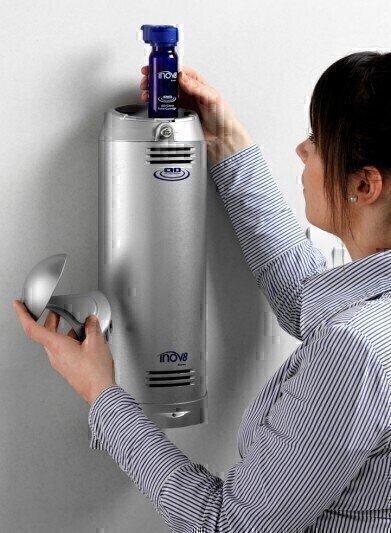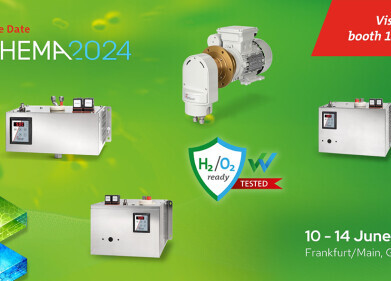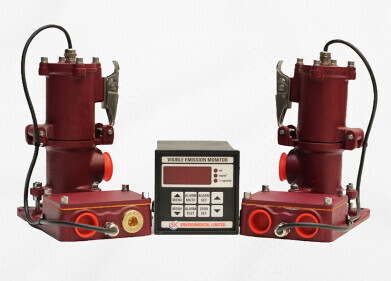Air Monitoring
Harley Street Doctors Assess Air Disinfection Technology
Aug 16 2010
Following successful air disinfection trials, the Harley Street Doctors Association invited technology company Inov8 to give a presentation to a select audience of doctors and hospital staff in the Attlee Room at the House of Lords on 17th May 2010.
The invitation was made at the behest of the Association’s Prof. Sam Lingam, who has witnessed the benefits of the Inov8 AD (Air Disinfection) device in his own surgery. A winner of the UK NHS Smart Solutions for HCAI Programme 2009, the AD unit generates hydroxyl radicals at levels that mimic atmospheric concentrations which are harmless to humans but extremely effective against bacteria and viruses.
Welcoming the attendees, Inov8’s Keith Esdon emphasised the importance of tackling Healthcare Associated Infection (HCAI). "It has been estimated that the NHS spends £1bn per year on HCAI," he said, adding: "Such infections typically add three to ten days to an average hospital patient stay."
Some of the healthcare sector’s major challenges are significantly affected by HCAI. For example, Keith listed staff sickness, ward closure, reduced bed capacity, cancelled elective admissions and cancelled or delayed medical procedures - all of which reduce the quality of care and impose a heavy financial burden.
A short technical presentation was provided by Inov8’s Dr Abdel Ezbiri, who summarised the development of the AD technology, explaining how research at the Porton Down Laboratory during World War II had initially identified the disinfection capabilities of fresh air and attributed this to hydroxyl radicals that were created by a reaction between two naturally occurring molecules – ozone and olefins.
In order to utilise the benefits of hydroxyl radicals in the internal environment, Dr Ezbiri explained, "The AD unit has been developed to provide a continuous source of radicals in applications such as hospitals and surgeries, in addition to other confined spaces in which people meet or work." Outlining the mode of action, he said, "The process by which the radical removes an electron from say a bacterium, results in the release of further radicals which creates a cascading effect that is particularly effective in contaminated environments."
Trials on the AD technology began in 2006 at the Health Protection Agency’s Porton Down Laboratory. These tests demonstrated a 99.999% kill of S. epidermidis and the viral surrogate organism MS2 Coliphage. Similarly, trials at Leeds University have shown dramatic levels of pathogen reduction in aerobiological chambers that were dosed with Staphylococcus aureus and Clostridium difficile.
Dr Ezbiri also provided feedback from hospitals all over the UK that have utilised AD units in the fight against infection. For example, during 2008 Hereford County Hospital experienced a total of 17 outbreaks of viral gastroenteritis due to norovirus. The outbreaks affected a total of 193 patients and 75 staff and caused a total of 144 days of ward closure. In June 2008, a total of 30 AD Units were installed in 3 of the Nightingale Wards at the Hospital and since then only one of these wards has been affected, when the closure was only for 3 days.
Following this success, in January 2009 a further 80 AD units were installed in the wards in the main building of the Hospital and there have been no closures in any of the wards since. (see graphs)
In other hospitals that are running the AD units, Dr Ezbiri reported that "in addition to anecdotal evidence that infection levels are being substantially reduced, good correlation is starting to emerge between lower infection rates and lower bioburden counts as a result of the units."
During a discussion that followed the presentations, there was general agreement that airborne infection is a major contributor in the healthcare sector and that the AD units represent a significant opportunity in the fight against HCAI.
Summarising, Prof Lingam said, "I am grateful to Inov8 for providing us with a greater insight into the technology behind the AD unit. It has been useful to review the trials and field-based experiences that have been undertaken and it seems that the AD offers considerable potential for the healthcare sector."
Digital Edition
IET 34.2 March 2024
April 2024
Gas Detection - Biogas batch fermentation system for laboratory use with automatic gas analysis in real time Water/Wastewater - Upcycling sensors for sustainable nature management - Prist...
View all digital editions
Events
May 13 2024 Munich, Germany
May 15 2024 Lund, Sweden
May 15 2024 Frankurt-am-Main, Germany
May 20 2024 Columbus, OH, USA
May 21 2024 Lagos, Nigeria



















